Are you looking for the Small Brown Bugs On Dog? If so, you’ve come to the right place.
Choosing the Small Brown Bugs On Dog can be difficult as there are so many considerations, such as Adams, Bayer, Boehringer Ingelheim, Hartz, SENTRY, Vectra 3D, Zodiac. We have done a lot of research to find the top 20 Small Brown Bugs On Dog available.
The average cost is $17.13. Sold comparable range in price from a low of $4.48 to a high of $37.02.
Based on the research we did, we think kin+kind Lavender Flea & Tick Spray is the best overall. Read on for the rest of the great options and our buying guide, where you can find all the information you need to know before making an informed purchase.
20 Best Selling Small Brown Bugs On Dog (20 Sellers)
1. Kin+kind Lavender Flea & Tick Spray
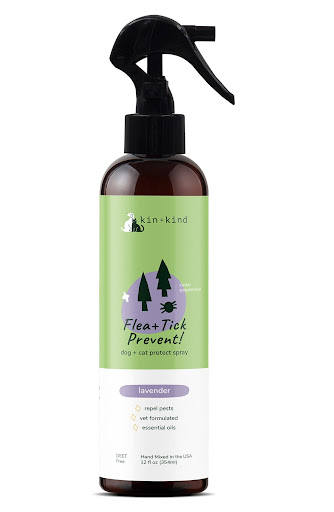
Product Details:
Specifications:
Reviews:
2. Country Vet Mosquito & Fly Spray 6.9 Oz Refill
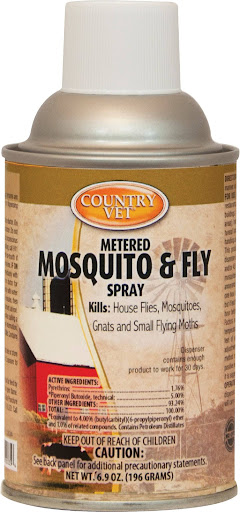
Product Details:
Specifications:
Reviews:
3. The Honest Kitchen Goat's Milk N' Cookies Pumpkin & Cinnamon Dog Treats, 8-Oz
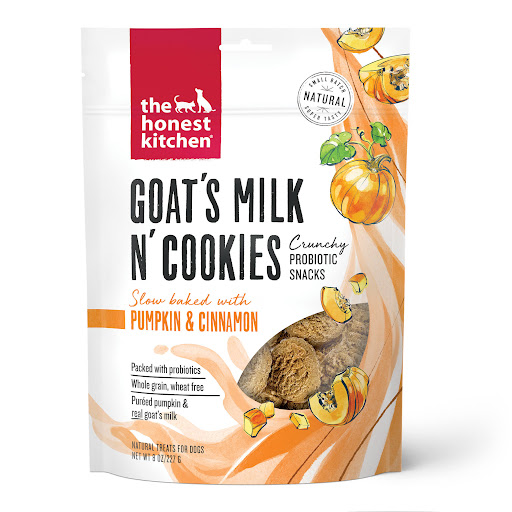
Product Details:
Specifications:
Reviews:
4. Blue Buffalo Boo Bars Pumpkin & Cinnamon Crunchy Dog Treats, 11-Oz Bag
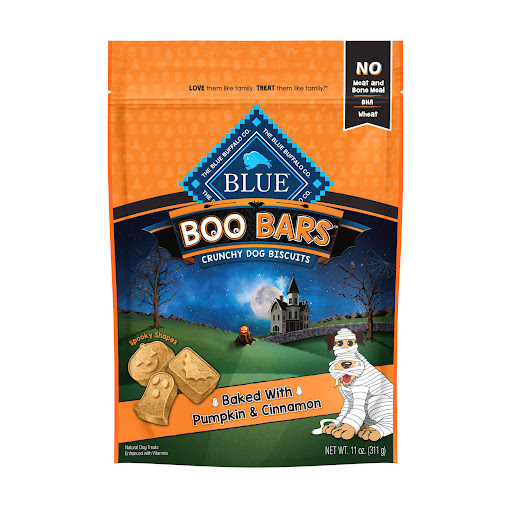
Product Details:
Specifications:
| Primary Flavor | Pumpkin |
| Primary Brand | Blue Buffalo |
| Grain Free | No |
| Live Food | No |
Reviews:
5. Petarmor Flea Treatment, For Dogs, Large – 3 Pack, 0.09 Fl Oz Applicators
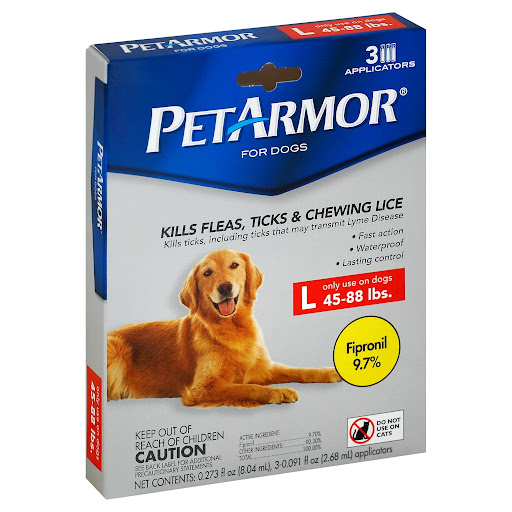
Product Details:
Specifications:
| Units in Package | 3 |
| Unit Size | 0.09 fl oz applicators |
| Directions | Directions for Use: It is a violation of Federal Law to use this product in a manner inconsistent with its labeling. Do not allow children to apply this product. Read entire label before each use. Carefully follow all precautionary statements and applicable use directions. For use on dogs only. do not use on rabbits or other animals. For topical application only. Do not allow your dog to ingest this product. Apply PetArmor For Dogs Only to dogs and puppies aged 8 weeks or older and 23-44 lbs., including on breeding, pregnant, and lactating bitches, as indicated below for control of fleas, ticks (including all stages of American dog ticks, brown dog ticks, deer ticks, and lone star ticks), and chewing lice. How to Apply: 1. Remove product applicator from the package. 2. Separate one applicator from the others. Hold the applicator with notched end pointing up and away from the face and body. Use scissors to cut off the narrow end at the notches along the line. 3. Part the dog's hair and place the tip of the applicator behind the neck and between the shoulders. Ensure that the entire application of this product is contained in a single spot on the dog's skin. Be sure to squeeze the applicator thoroughly so that the entire contents are applied. Do not apply the product superficially to the dog's hair. use only one applicator during each application. Do not touch the area where the application was made until it is dry. PetArmor for Dogs also aids in the control of sarcoptic mange infestations. Frequency of Application: Fleas: According to research studies, adult fleas are killed for up to three months following an application of Fipronil. If, however, your dog or puppy is susceptible to flea allergy dermatitis, or if you believe there is a risk of reinfestation, apply once every month. Ticks: Each application kills ticks for one month or longer. For best control of ticks, apply once every month. Chewing Lice: Each application kills chewing lice for one month or longer. For best control of chewing lice, apply once every month. Do not reapply PetArmor for Dogs for thirty (30) days. Storage and Disposal: Pesticide Storage: Do not remove tube from the pack until ready to use. Store in a cool (below 77 degrees F/25 degrees C) dry place inaccessible to children and pets. Do not refrigerate. Protect from direct sunlight. Container Disposal: if empty: Non-refillable container. Do not reuse or refill this container. Offer for recycling if available. if partly filled: Call your local solid waste agency for disposal instructions. never place unused product down any indoor or outdoor drain. |
| Ingredients | Active Ingredients: Fipronil (9.70%), Other Ingredients (90.30%). Total (100.00%). |
| Warnings | Keep out of reach of children. Caution: See back label for additional precautionary statements. Precautionary Statements: Hazards to humans. Caution. Harmful if swallowed. Cause eye irritation. Avoid contact with skin, eyes or clothing. Washing hands thoroughly with soap and water after handling and before eating, drinking, chewing gum, using tobacco, or using the toilet. Hazards to domestic animals. For external use on dogs only. Individual sensitivities, while rare, may occur after using any pesticide product on dogs. Certain medications can interact with pesticides. Do no treat your dog with more than one pesticide product at a time. Over dosing your dog can result in serious illness and even death. Consult a veterinarian before using on medicated, debilitated, aged, pregnant or nursing dogs. Consult a veterinarian before using on dogs with known organ dysfunction. If your dog is exhibiting signs of and/or is being treated for skin dermatitis, talk to your veterinarian before applying any topical flea and tick control product. First Aid: If Swallowed: Call a poison control center or a doctor immediately for treatment advice. Have person sip a glass of water if able to swallow. Do not induce vomiting unless told to do so by a poison control center or doctor. Do not give anything by mouth to an unconscious person. If In Eyes: Hold eye open and rinse slowly and gently with water for 15-20 minutes. Remove contact lenses, if present, after the first 5 minutes, then continue rinsing eye. Call a poison control center or doctor for treatment advice. If On Skin: Wash with plenty of soap and water. Get medical attention if irritation persists. Hot Line Number: Have the product container or label with you when calling a poison control center or doctor, or going for treatment. You may also contact 1-888-908-Tick (8425) for emergency medical treatment information. Physical or Chemical Hazards Flammable: Keep away from heat and open flame. Side Effects: Monitor your dog after application. Infrequent side effects may include signs of skin irritation such as redness, scratching, or other signs of discomfort. gastrointestinal signs such as vomiting and/or diarrhea have been reported. If these or other side effects occur, consult your veterinarian or FidoPharm at 1-88-908-Tick (8425). Do not use on cats. Keep cats away from treated dogs for 24 hours. If applied to a cat or ingested by a cat, contact your veterinarian. |
Reviews:
6. Spectracide Triazicide Once & Done! Insect Killer Granules – 10 Lb Bag
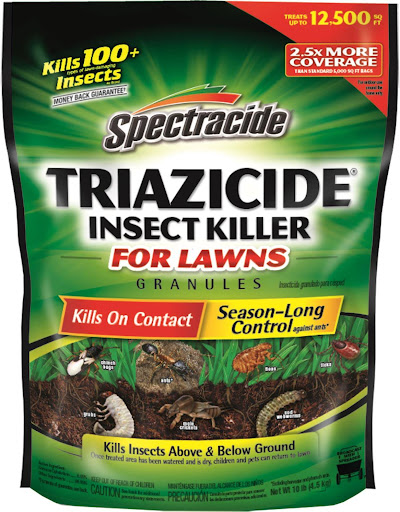
Product Details:
Specifications:
| Units in Package | 1 |
| Unit Size | 10 lb |
| Directions | Where to Use: Outdoors, on lawns and as a band treatment around house foundation. Stop read entire label before use. Directions for Use: It is a violation of Federal law to use this product in a manner inconsistent with its labeling. Keep children and pets off treated area until product has been watered in and lawn is dry. In New York State, this product may not be applied to lawns within 100 ft of a coastal marsh, or stream that drains directly into a coastal marsh. Three Easy Steps to Use this Product: Step No. 1: Determine size of the job, measure the area to be treated. Step No. 2: Use spreader setting chart to determine appropriate setting for your spreader. Step No. 3: Treat as directed in rate chart. Thorough coverage is important. Water in granules immediately after application. Note: Do not apply more than six (6) times per year per location at low use rate. Do not apply more than three (3) times per year per location at high use rate. Do not allow product to run off from target site or apply within 24 hours of rain. Do not make applications during rain. Apply this product directly to the lawn or garden area. Water treated area as directed on this label. Do not water to the point of runoff. Application is prohibited directly into sewers or drains, or to any area like a gutter where drainage to sewers, storm drains, water bodies or aquatic habitat can occur. Do not allow the product to enter any drain during or after application. Treat the following pests during the months indicated. Make no more than six applications per year at low use rate or three times for highest use rate. Directions for Applying: Treatment Areas: Band Treatment around house foundation. Pests: Ants (Ants [except harvester and pharaoh]: Argentine, carpenter, southern, field, Allegheny mound, cornfield, honey, pavement, red imported fire ant, nuisance, odorous, pyramid, black turf, white-footed, crazy, little black, ghost, thief, acrobat, citronella, big-headed, lawn), fleas, roaches (German and American), Palmetto bugs, water bugs, millipedes, mites, silverfish, sowbugs (pillbugs), crickets (Crickets: House, common short-tailed, Indies short-tailed, Arizona, tropical, variable field, fall field, southeastern field, Texas field, spring field, northern wood, western striped, eastern striped, sand field, vocal field, southern wood), earwigs, ladybeetles (Ladybeetles: Convergent, seven-spotted, two-spotted, thirteen-spotted, twice-stabbed, Asian), cutworms (black, bronzed, granulate, variegated, greasy, spotted, army, clover, green), firebrats and spider mites (two-spotted and spruce). How To Use: These pests are commonly found around or near foundations of houses as well as in lawns. Certain of these pests may enter houses. Apply a 3- to 5-foot band of granules next to the house foundation. Distribute granules uniformly. Water lightly immediately after application. Use Rate: Apply at the rate of 0.8 lb per 1,000 sq ft (an area 5 ft x 200 ft). Treatment Areas: Overall lawn application. Pests: Ants (Ants [except harvester and pharaoh]: Argentine, carpenter, southern, field, Allegheny mound, cornfield, honey, pavement, red imported fire ant, nuisance, odorous, pyramid, black turf, white-footed, crazy, little black, ghost, thief, acrobat, citronella, big-headed, lawn), armyworms (fall, yellow-striped, lawn), European crane flies, crickets (Crickets: House, common short-tailed, Indies short-tailed, Arizona, tropical, variable field, fall field, southeastern field, Texas field, spring field, northern wood, western striped, eastern striped, sand field, vocal field, southern wood), cutworms (black, bronzed, granulate, variegated, greasy, spotted, army, clover, green), earwigs, fleas, lawn moths (sod webworms), grasshoppers, Japanese beetle (adults), pillbugs, spittlebugs, mites, green June beetles, leafhoppers (Leafhoppers: Mountain, rose, southern garden, variegated, variegated larvae, Virginia creeper, aster, six-spotted, elm, white-banded elm, sharp-nosed, blunt-nosed, red-banded and rice), millipedes, springtails, ticks (including ticks that may transmit Lyme Disease), ladybeetles (Ladybeetles: Convergent, seven-spotted, two-spotted, thirteen-spotted, twice-stabbed, Asian), webworms (grass, tropical sod), mealybugs. Billbugs (bluegrass, hunting), grubs (Japanese beetle grubs, green June beetle grubs), Ataenius spretulus (dung beetles), hyperodes weevils, mole crickets (tawny, southern, short-winged), chinch bugs. How to Use: Apply with a fertilizer spreader. See spreader setting chart below. Apply when grass is dry. Water lawn lightly immediately after application. For season-long control of ants (Ants (except harvester and pharaoh): Argentine, carpenter, southern, field, Allegheny mound, cornfield, honey, pavement, red imported fire ant, nuisance, odorous, pyramid, black turf, white-footed, crazy, little black, ghost, thief, acrobat, citronella, big-headed, lawn), apply at higher use rate. Immediately water grass thoroughly after application. For billbug control, apply when activity is first observed or when chewed or brown grass indicates damage from these insects. For grub control, except dung beetle, treat any time between late July and early October. For dung beetle grub control, apply in spring or early summer when damage is first noticed. Water grass thoroughly with 1/4 to 1/2 inch of water immediately after application. Treat again in late summer or early fall if a second generation occurs. Use Rate: Apply at the rate of 0.8 lb per 1,000 sq ft (an area 20 ft x 50 ft). For season-long control of ants (Ants [except harvester and pharaoh]: Argentine, carpenter, southern, field, Allegheny mound, cornfield, honey, pavement, red imported fire ant, nuisance, odorous, pyramid, black turf, white-footed, crazy, little black, ghost, thief, acrobat, citronella, big-headed, lawn), apply at the rate of 2 lb per 1,000 sq ft (an area 20 ft x 50 ft). Apply 1.2 lb per 1,000 sq ft of lawn. Treatment Areas: Spot treatment. Pests: Ants (Ants [except harvester and pharaoh]: Argentine, carpenter, southern, field, Allegheny mound, cornfield, honey, pavement, red imported fire ant, nuisance, odorous, pyramid, black turf, white-footed, crazy, little black, ghost, thief, acrobat, citronella, big-headed, lawn). How to Use: Water lightly immediately after application. Use Rate: Apply 1/2 tsp over and around each anthill. Spreader Settings for Overall Lawn Application: Spreader Make and Model: Cyclone: Rotary: 0.8 lb/1,000 sq ft: 1; 1.2 lb/1,000 sq ft: 2; 2 lb/1,000 sq ft: 4; K-Gro: Drop: 0.8 lb/1,000 sq ft: 2; 1.2 lb/1,000 sq ft: 3; 2 lb/1,000 sq ft: 5; Republic: EZ Drop (No: 530): 0.8 lb/1,000 sq ft: 3; 1.2 lb/1,000 sq ft: 5; 2 lb/1,000 sq ft: 8; EZ Rotary (No: 540): 0.8 lb/1,000 sq ft: 1; 1.2 lb/1,000 sq ft: 1 1/2; 2 lb/1,000 sq ft: 2 1/2; Scotts: accugreen 1000: 0.8 lb/1,000 sq ft: 3; 1.2 lb/1,000 sq ft: 3 1/2; 2 lb/1,000 sq ft: 4 1/2; accugreen 2000: 0.8 lb/1,000 sq ft: 3; 1.2 lb/1,000 sq ft: 3 1/2; 2 lb/1,000 sq ft: 4 1/2; accugreen 3000: 0.8 lb/1,000 sq ft: 3; 1.2 lb/1,000 sq ft: 3 1/2; 2 lb/1,000 sq ft: 4 1/2; speedygreen 1000: 0.8 lb/1,000 sq ft: 2 1/2; 1.2 lb/1,000 sq ft: 3 1/2; 2 lb/1,000 sq ft: 4 1/2; speedygreen 2000: 0.8 lb/1,000 sq ft: 2 1/2; 1.2 lb/1,000 sq ft: 3 1/2; 2 lb/1,000 sq ft: 4 1/2; speedygreen 3000: 0.8 lb/1,000 sq ft: 2 1/2; 1.2 lb/1,000 sq ft: 3 1/2; 2 lb/1,000 sq ft: 4 1/2; edgeguard: 0.8 lb/1,000 sq ft: 2 1/2; 1.2 lb/1,000 sq ft: 3 1/2; 2 lb/1,000 sq ft: 4 1/2; Earthway: Rotary: 0.8 lb/1,000 sq ft: 5; 1.2 lb/1,000 sq ft: 6; 2 lb/1,000 sq ft: 7 1/2; Sears: Drop: 0.8 lb/1,000 sq ft: 2 1/2; 1.2 lb/1,000 sq ft: 3 1/2; 2 lb/1,000 sq ft: 5; Precision: Rotary (No: S850): 0.8 lb/1,000 sq ft: 1; 1.2 lb/1,000 sq ft: 2; 2 lb/1,000 sq ft: 3 1/2; Red Devil: Rotary: 0.8 lb/1,000 sq ft: 1; 1.2 lb/1,000 sq ft: 2; 2 lb/1,000 sq ft: 3 1/2; True Temper: Rotary: 0.8 lb/1,000 sq ft: 1; 1.2 lb/1,000 sq ft: 1 1/2; 2 lb/1,000 sq ft: 3. Note: The spreader settings listed above are approximate. Accurately weigh a few pounds into your spreader and apply to a measured area. Then adjust spreader setting if necessary, in order to ensure correct rate of application. Storage and Disposal: Storage: Reclose container tightly after each use. Store in a cool, dry area which is inaccessible to children and pets. Disposal: If empty: Nonrefillable container. Do not reuse or refill this container. Offer for recycling, if available. If partly filled: Call your local solid waste agency for disposal instructions. Never place unused product down any indoor or outdoor drain. |
| Ingredients | Active Ingredients: Gamma-Cyhalothrin (0.05%), Other Ingredients: (99.95%). |
| Warnings | Caution: See back for additional precautionary statements. Precautionary Statements: Hazards to humans and domestic animals. Caution: Causes moderate eye irritation. Avoid contact with eyes or clothing. Wash thoroughly with soap and water after handling and before eating, drinking, chewing gum, or using tobacco. Food utensils such as spoons or measuring cups must not be used for food purposes after use in measuring pesticides. First Aid: If in Eyes: Hold eye open and rinse slowly and gently with water for 15-20 minutes. Remove contact lenses, if present, after the first 5 minutes, then continue rinsing eye. Call a Poison Control Center or doctor for treatment advice. Have the product container or label with you when calling a Poison Control Center, doctor, or going for treatment. You may also contact 1-800-917-5438 for emergency medical treatment information. Keep out of reach of children. Environmental Hazards: This product is highly toxic to fish and aquatic invertebrates. To protect the environment, do not allow pesticide to enter or run off into storm drains, drainage ditches, gutters or surface waters. Applying this product in calm weather when rain is not predicted for the next 24 hours will help to ensure that wind or rain does not blow or wash pesticide off the treatment area. Sweeping any product that lands on a driveway, sidewalk or street, back onto the treated area of the lawn or garden will help to prevent runoff to water bodies or drainage systems. Notice: The extent consistent with applicable law, buyer assumes all responsibility for safety and use in accordance with directions. |
Reviews:
7. Three Dog Bakery Treats For Dogs, Pet-Zel Bites – 24 Oz
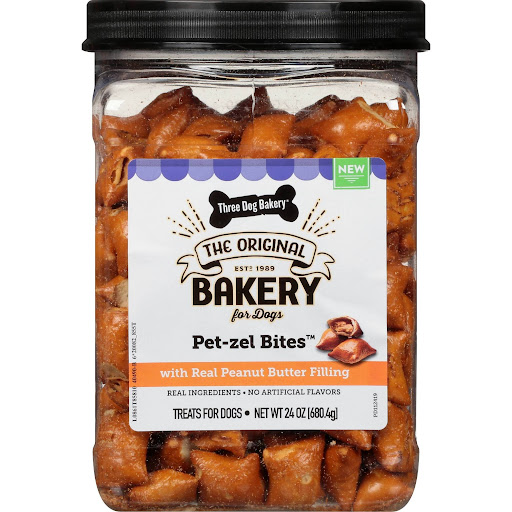
Product Details:
Specifications:
| Units in Package | 1 |
| Unit Size | 24 oz |
| Directions | Store in a cool, dry place. |
| Ingredients | ., Wheat Flour, Peanut Butter, Soybean Oil, Corn Syrup, Malted Barley. |
Reviews:
8. Tropiclean Natural Flea & Tick Yard Spray – 32 Fl Oz
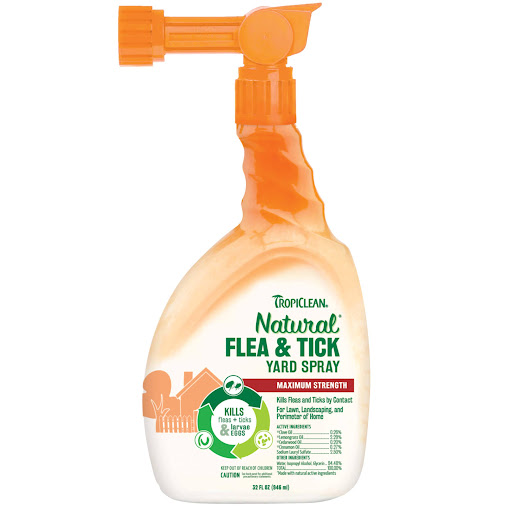
Product Details:
Specifications:
Reviews:
9. Garden Tech Sevin Insect Killer – 1 Quart
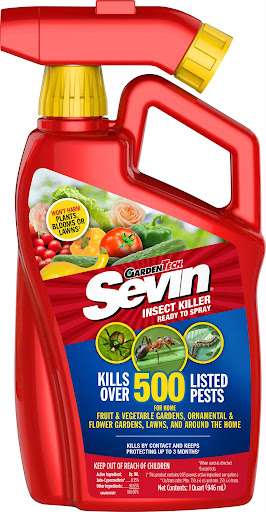
Product Details:
Specifications:
| Units in Package | 1 |
| Unit Size | 1 quart |
| Directions | Where to Use: Fruit and vegetable gardens, ornamental plants and shrubs, flowers and ground covers, around structures, lawns. How Much to Use: Mixes automatically as you spray. Treats 2,000 sq ft of lawn. Direction for Use: It is a violation of Federal law to use this product in a manner inconsistent with its labeling. Shake well before using. Use Restrictions: Do not treat pets with this product. Do not apply this product in a way that will contact adults, children, or pets, either directly or through drift. Do not allow adults, children, or pets to enter the treated area until sprays have dried. Remove pets, birds, and cover fish aquariums before spraying. Avoid contamination of food and feedstuffs. Remove or cover exposed food and drinking water before application. Do not use in food handling establishments in which food is held, processed, prepared, and/or served. When used in the home, remove or cover dishes, utensils, food processing equipment, and food preparation surfaces or wash them before use. Do not apply directly to animals. Do not use in aircraft. For Outdoor Uses: All outdoor applications must be limited to spot or crack-and-crevice treatments only, except for the following permitted uses: (1) Treatment to soil or vegetation around structures; (2) Applications to lawns, turf, and other vegetation; (3) Applications to building foundations, up to a maximum height of 3 feet. Other than applications to building foundations, all outdoor applications to impervious surfaces such as sidewalks, driveways, patios, porches and structural surfaces (such as windows, doors, and eaves) are limited to spot and crack-and-crevice applications, only. Do not water the treated area to the point of run-off. Do not make applications during rain. Application is prohibited directly into sewers or drains, or to any area like a gutter where drainage to sewers. Storm drains, water bodies, or aquatic habitat can occur. Do not allow this product to enter any drain during or after application. Specific use Directions: Sevin Insect Killer Ready to Spray applied through the ready-to-spray hose-end sprayer delivers a solution containing 0.011% zeta-cypermethrin. For all applications, this product provides control of each pest as listed in the Pest Table (see page 5). How to Use the Ready to Spray: Shake Well; Make sure control lever is in the off position. Attach to hose; Turn on water. Extend hose to furthest place in lawn or garden, so you can work backwards and limit exposure to spray; Spray; Aim towards direction of application and away from you; Turn control lever to on to begin spraying; Spray evenly and as directed for specified type of treatment area; When finished turn control lever to off; Turn faucet off. Discharge residual water pressure by turning control lever on and off again; Disconnect Sprayer and Store/Discard as instructed. Application Instructions: Apply where insects are expected to appear or when insects or damage are seen. Repeat as necessary according to site-specific directions listed below; Apply in calm weather; Begin spraying at the farthest point of the treatment area and work backward to avoid contact with wet treated surfaces; Spray thoroughly to wet plant surfaces up to the point of runoff; Sprays must be dry in treated areas before people or pets re-enter; Do not apply to trees taller than 10 feet. Consider hiring a licensed professional. Garden Vegetables: In the table below, the Pre-Harvest Interval (PHI) refers to the minimum number of days that must pass between the date of the last application and the date of harvest. Reapply it insects return, but not more than once every seven days and according to pre-harvest interval. Vegetables: Brassica Vegetables: Broccoli, Chinese Broccoli (gai Ion, white flowering broccoli), Brussels Sprouts, Cauliflower, Cavalo Broccolo, Kohlrabi, Cabbage, Chinese Cabbage (napa), Chinese Mustard Cabbage (gai choy), Broccoli Raab (rapini), Chinese Cabbage (bok choy), Collards, Kale, Mizuna, Mustard Greens, Mustard Spinach, Rape Greens, Turnip Greens. PHI: 1 Day. Vegetables: Corn (sweet). PHI: 3 Days. Vegetables: Cucurbit Vegetables: Chayote (fruit), Chinese Waxgourd (Chinese Preserving Melon), Citron Melon, Cucumber, Gherkin, Gourd (edible) (including hyotan, cucuzza. Hechima, Chinese orkra), Mormordica spp. (Includes balsam apple, balsam pear, bitter melon, Chinese cucumber), Muskmelon (includes true cantaloupe, cantaloupe, casaba, crenshaw melon, golden pershaw melon, honeydew melon, honey balls, mango melon, Persian melon, pineapple melon, Santa Claus melon, and snake melon), Pumpkin, Summer Squash (includes crookneck squash, scallop squash, straightneck squash. Vegetable marrow, zucchini), Winter Squash (includes butternut squash, calabaza, hubbard squash, acorn squash, and spaghetti squash), Watermelon (includes hybrids and varieties). PHI: 1 Day. Vegetables: Legume Vegetables – Succulent Edible-Podded Peas, Succulent Shelled Peas and Dried Shelled Peas: Dwarf Pea, Edible-pod Pea, Snow Pea, Sugar Snap Pea, Pigeon Pea, English Pea, Garden Pea, Green Pea, Lentil. PHI: 1 Day (succulent) 21 days (dried). Vegetables: Legume Vegetables – Succulent Edible-Podded Beans, Succulent Shelled Beans, and Dried Shelled Beans: Runner Bean, Snap Bean, Wax Bean, Asparagus Bean, Chinese Longbean, Moth Bean, Yardlong Bean, Jackbean, Soybean (immature seed), Swordbean, Lima Bean, Broad Bean (Fava Bean), Black-eyed Pea, Southern Pea, Grain Lupin. Sweet Lupin, White Lupin, White Sweet Lupin, Field Bean. Kidney Bean, Navy Bean. Pinto Bean, Tepary Bean, Adzuki Bean, Catjang, Cowpea, Crowder Pea, Moth Bean, Mung Bean, Rice Bean, Urd Bean, Chickpea (Garbanzo Bean), Guar, Lablab Bean. PHI: 1 Day (succulent) 21 days (dried). Vegetables: Fruiting Vegetables: Eggplant. Groundcherry (Physalis spp.), Okra, Pepino (Melon pear), Pepper (includes bell pepper, chili pepper, cooking pepper, pimento, sweet pepper), Tomatillo, Tomato. PHI: 1 day. vegetables: leafy vegetables: amaranth (leafy amaranth, chinese spinach, tampala); Arugula (roquette), cardoon, celery, Chinese celery, celtuce, chervil, chrysanthemum (edible-leaved and garland), cilantro (not for use on cilantro grown for seed or coriander), corn salad, cress (garden, upland (yellow rocket, winter cress)), dandelion, dock (sorrel), endive (escarole), fennel/Florence (finochio), garden cress, lettuce (head and leaf), orach, parsley, purslane (garden), purslane (winter), radicchio (red chicory), rhubarb, spinach (including New Zealand and vine, Malabar spinach, Indian spinach), Swiss chard. PHI: 1 Day. Vegetables: Peanuts. PHI: 7 Days. Vegetables: Root and Tuber Vegetables (except sugar beets): Arracacha, arrowroot, artichoke (Chinese and Jerusalem), garden beet, edible burdock, edible canna, carrot, cassava (bitter and sweet), celeriac (celery root), chayote (root), turnip-rooted chervil, chicory, chufa, dasheen (taro), ginger, ginseng, horseradish, leren, turnip-rooted parsley, parsnip, potato, oriental radish (daikon), radish, rutabaga, salsify (oyster plant), black salsify, Spanish salsify, skirret, sweet potato, tanier (cocoyam), turmeric, turnip, yam bean, yam (true). PHI: 1 Daay. Vegetables: Sunflowers: Castor oil plant, Chinese tallowtree, euphorbia, evening primrose, jojoba, Niger seed, rose hip, stokes aster, tallowwood, tea oil plant, and vemonia. PHI: 30 Days. Berries, Fruits, and Nuts: Use Sevin Insect Killer Ready to Spray as a spot treatment for pest infestations on the berries, fruits and nuts listed below. Applications to trees over 10 feet or trees with areas inaccessible to sprays are not recommended. Apply spray mixture to upper and lower leaves, around fruit clusters, and on branches and trunks up to the point of runoff. Reapply if insects return, but not more than once every seven days and according to pre-harvest interval. Berries, Fruits, and Nuts: Berries Crop Group including: Blackberry, loganberry, red and black raspberry, blueberry, highbush and lowbush, currant, elderberry, gooseberry, huckleberry, cultivars and/or hybrids of these. PHI: 1 Day. Berries, Fruits, and Nuts: Grapes. PHI: 1 Day. Berries, Fruits, and Nuts: Pome Fruit Group including: Apple, crabapple, loquat, mayhaw, pear, oriental pear, and quince. PHI: 14 Days. Berries, Fruits, and Nuts: Stone Fruit Group including: Apricot, cherry (sweet and tart), nectarine, peach, plum (including chickasaw plum, damson plum, and Japanese plum), plumcot, prune (fresh). PHI: 14 Days. Berries, Fruits, and Nuts: Tree Nuts Group including: Almond, beech nut, Brazil nut, butternut, cashew, chestnut, chinquapin, filbert (hazelnut), hickory nut, macadamia nut, pecan, pistachio, walnut (black and english). PHI: 7 Days. Berries, Fruits, and Nuts: Tropical Fruits including: Avocado, black sapote, canistel, mamey sapote, mango, papaya, sapodilla, star apple. PHI: 1 Day. Ornamental Trees, Shrubs, Flowers, and Ground Covers: Use Sevin Insect Killer Ready to Spray as a spot treatment for pest infestations on ornamental trees, shrubs, flowers and ground covers. Spray up to the point of run-off making sure to cover all sides of leaves and trunk. For ground covers, bedding plants, foliage, annuals and perennials, apply as a uniform spray. Reapply if pests return, but repeat applications should be limited to no more than once per seven days. Certain plants such as annuals may be sensitive to the final spray solution. A limited area should be treated and observed for one week prior to application to the entire planting. Outdoor Perimeter Treatments: Apply to the point of run-off as a residual spray to vegetation such as bushes and trees around buildings and other structures. For ants, apply to any trails, around doors and windows and other places where ants may be found. To prevent pests from entering buildings, apply to a band of soil and vegetation 5 to 10 feet wide around and adjacent to the building. Also treat the building foundation to a height of 2 to 3 feet where pests are active and may find entrance. The surface to be treated should be dry at the time of application. Lawns: Uniformly apply the product per 2,000 sq ft area. For best results, apply after mowing (lawn should not be longer than 3 inches at the time of application). Repeat applications are necessary only if there are signs of renewed insect activity. Pests Controlled: Caterpillars, Butterflies and Moths: Tent forming caterpillars, cocoon forming caterpillars, chrysalis forming caterpillars. Leaf feeding caterpillars (including leaves of flowering plants, bushes and other ornamentals, vegetables and trees), azalea leafminers, green cloverworm, fruit eating caterpillars, legume feeding caterpillars, vegetable feeding caterpillars, stem and trunk boring caterpillars, and leafrolling caterpillars. Caterpillars of the yucca moth family such as fairy moths and yucca moths; Clothes moth family; bagworm moth family, gelechiid moth family such as potato tuber moths; Ermine moth family such as ailanthus webworm moth; Clear winged moth family such as manroot borer, squash vine borer, doll's clearwing moth, California sycamore borer: Tortricid moth family (millers) such as fruit tree leafroller moth, orange tortrix, and codling moth; skippers such as least skipper, silver-spotted skipper, and long-tail skipper; Swallowtails such as green swallowtail, zebra swallowtail, giant swallowtail (orange tail, orange puppy), pale swallowtail, eastern tiger swallowtail, eastern black swallowtail, spicebush swallowtail, and phoebus; Whites, sulphurs and orange tips family such as sara orange tip, great southem white, and European cabbage butterfly; Gossamer-winged butterflies family such as great purple hairstreak, spring azure, early hairstreak, eastern tailed blue, harvester, silvery blue, brown elfin, marine blue, American copper, and gray hairstreak: metalmark family such as Northern metalmark; Snout butterflies family such as common snout butterfly; Brush-footed butterfly family such as gulf fritillary, white peacock, harris checkerspot, painted lady (thistle butterfly), American painted lady (painted beauty), baltimore, zebra (yellow-barred heliconian), viceroy, white admiral (banded purple), mourning cloak, milbert's tortoise shell, pearl crescent, question mark, buckeye, great spangled fritillary, and red admiral: Hackberry and goatweed butterfly family such as hackberry butterfly; Satyrs, nymphs and arctics family such as wood nymph (American grayling), white wood satyr, eyed brown (grass nymph), pearly eye, and chryxus arctic; Milkweed butterfly family such as queen, and monarch; Smoky moth family such as grape leaf skeletonizer; Slug caterpillar moth family such as saddleback caterpillar moth; Pyralid moths family such as mediterranean flour moth sod webworm moth, Indian meal moth, meal moth; Plume moth family such as artichoke plume moth; Measuringworm moth family such as tulip tree beauty, california cankerworm moth, and large California spanworm moth; Tent caterpillar moth family such as western tent caterpillar moth; Giant silkworm moth family such as luna moth, polyphemus moth, lo moth, promethea moth (spicebush silkmoth), regal moth (royal walnut moth), rosy maple moth, imperial moth, sheep moth, cecropia moth, and cynthia moth; Sphinx moth family such as virginia-creeper sphinx, pandora sphinx, hummingbird moth (common clearwing), white-lined sphinx, tomato hornworm moth, tobacco hornworm moth, big poplar sphinx, cerisy's sphinx, and wild-cherry sphinx; Prominents family such as tentacled prominenets (puss moths), and red-humped appleworm moth; Tiger moth family such as ornate tiger moth, yellow woolly bear moth, acraea moth, milkweed tiger moth, spotted tiger moth, colona, woolly bear caterpillar moth (banded woolly bear), lichen moth, and rattlebox moth; Ctenuchid moth family such as virginia ctenuchid moth; Tussok moth family such as gypsy moth, white-marked tussok moth; Owlet moth family such as eight-spotted forester, black witch, alfalfa looper, sweetheart underwing, locust underwing, and hebrew. Common Bristletails: Sliverfish family such as silverfish, and firebrat. Springtails: Podurid springtail family such as snow pea, seashore springtail; Entomobryid springtail family such as ainsley’s springtail; Globular springtail family. Cockroaches: Blattid cockroach family such as oriental cockroach (Asiatic cockroach, shad cockroach), and American cockroach (waterbug); Blattellid cockroaches family such as German cockroach (Croton bug). Termites: Rotting-wood termite family such as pacific coast termite; subterranean termite family such as subterranean termites. Not intended to replace structural treatments. For termites – not recommended as sole protection against termites. Such applications are not a substitute for mechanical alterations, soil or foundation treatment but merely as a supplement. For active infestations, get a professional inspection. Earwigs: long-horned earwig family such as ring-legged earwig, and riparian earwig; Common earwig family such as European earwig. Grasshoppers & Crickets: Pygmy grasshopper family such as Aztec pygmy grasshopper; Short-horned grasshopper family such as creosote bush grasshopper, lubber grasshopper, painted grasshopper, Carolina locust, dragon lubber grasshopper (gray dragon), three-banded grasshopper (banded range grasshopper), differential grasshopper, red-legged locust, spur-throated grasshopper,-two-stripped grasshopper, panther-spotted grasshopper, southeastern lubber grasshopper, alutacea bird grasshopper, American bird grasshopper, green valley grasshopper, toothpick grasshopper, horse lubber grasshopper, pallid-winged grasshopper, and great crested grasshopper (dinosaur grasshopper); Long-horned grasshoppers and katydids family such as oblong-winged katydid, mormon cricket, short-legged shield back katydid, California katydid, angular-winged katydid, keeled shield-back katydid, nebraska cone-head, gladiator katydid, mescalero shield-back katydid, true katydid (northern katydid), and fork-tailed bush katydid; Camel crickets family such as spotted camel cricket, secret cove cricket, Jerusalem cricket; True crickets family such as house cricket (cricket on the hearth), field cricket, California tree cricket, snowy tree cricket, and black-homed tree cricket; Mole cricket family such as northern mole cricket and European mole cricket. True Bugs: Plant bug family such as adelphocoris plant bugs, scarlet plant bugs, tarnished plant bugs. and four-lined plant bug; Assassin bug family such as bee assassins, wheel bug; Ambush bug family such as jagged ambush bug; Lace bug family such as oak lace bug; seed bug family such as small eastern milkweed bug; Long-necked seed bug, and large milkweed bug; Stilt bug family such as stilt bugs; Leaf-footed bug family such as florida leaf-footed bug, and squash bug; Scentless plant bug family such as eastern boxelder bug and western boxelder bug; Stink bug family such as green stink bug, brochymenas, two-spotted stink bug (conspicuous stink bug), harlequin cabbage bug (calico bug, fire bug), and spined soldier bug. Cicadas and kin: Cicada family such as periodical cicadas, dogday harvestfly, and grand western cicada. Pests controlled: Treehoppers: Treehopper family, such as Thorn-mimic treehopper, oak treehopper, buffalo treehopper, and locust treehopper. Leafhoppers: Leafhopper family such as grape leafhopper, scarlet-and-green leafhopper, sharpshooter. Thrips: Banded thrips family such as banded-wing thrips; Common thrips family. Beetles: Tiger beetle family such as beautiful tiger beetle, dainty tiger beetle, six-spotted green tiger beetle, and dejean's flightless tiger beetle; ground beetle family such as bombardier beetle, fiery searcher (caterpillar hunter), European ground beetle, green pubescent ground beetle, common black ground beetle, and boat-backed ground beetle; Predacious diving beetle family such as small flat diving beetle, large diving beetle, and marbled diving beetle; whirligig beetle family such as large whirligig beetle, and small whirligig beetle; Hister beetle family such as hister beetles; Rove beetle family such as gold-and-brown rove beetle and pictured rove beetle; Carrion beetle family such as margined burying beetle, tomentose burying beetle (gold-necked carrion beetle), American carrion beetle, and northern carrion beetle; Stag beetle family such as elephant stag beetle. Agassiz's flat-horned stag beetle, reddish-brown stag beetle, and rugose stag beetle; Bessbugs family such as patent-leather beetle (homed passalus); Scarab beetle family such as tumblebugs, goldsmith beetle, green jumping beetle, brown fruit chafer, glossy pillbug, grapevine beetle, may beetles (June beetles), ten-lined June beetles, and Japanese beetle; Metallic wood-boring beetles such as golden buprestid, western pine borer (sculptured pine borer), and divergent metallic wood borer (flatheaded cherry tree borer); Click beetle family such as eastern eyed click beetle (big-eyed click beetle), and fire beetles; Fireflies (lightning bugs) family such as pyralis firefly, and Pennsylvania firefly; Soldier beetle family such as Pennsylvania leather-wing, and downy leather-wing, net-winged beetle family such as banded net-wing, and golden net-wing; Spider beetle family such as spider beetles, and Texan spider beetle; Branch and twig borer family such as apple twig borer; Checkered beetle family such as California checkered beetle, elegant checkered beetle, slender checkered beetle, and red-blue checkered beetle; Flat bark beetle family such as red flat bark beetle; Pleasing fungus beetle such as rough fungus beetle; ladybug beetles such as two-spotted ladybug beetle, nine-spotted ladybug beetle, spotless nine-spotted ladybug, convergent ladybug beetle, and ash gray ladybug beetle; Darkling beetles such as horned fungus beetle, broad-necked darkling beetle, plicate beetle, yellow mealworm beetle, and ironclad beetle; Fire-colored beetles family such as fire beetles; Blister beetles family such as striped blister beetle, Arizona blister beetle, short-winged blister beetle (oil beetle); Long-horned beetle family such as black-horned pine borer, yellow douglass fir borer, long-jawed longhorn, elder borer (cloaked knotty-horn), twig pruners, pine sawyer (spined-neck longhorn), golden-haired flower longhorn, locust borer, black pine sawyer (white spotted sawyer), cylindrical hardwood borer, cottonwood twig borer, cottonwood borer, giant root borers, ribbed pine borer, California laurel borer (banded alder borer), ivory marked beetle, red milkweed beetle (eastern milkweed longhorn), notch-tipped flower longhorn, and willow borer; Seed borer family such as bean weevil; Leaf beetle family such as dogwood calligrapha, milkweed tortoise beetle (Argus tortoise beetle), dogbane leaf beetle, milkweed leaf beetle, willow leaf beetle, spotted asparagus beetle, clavate tortoise beetle, spotted cucumber beetle, waterlily leaf beetle, swamp milkweed leaf beetle, three-lined potato beetle (old-fashioned potato bug), Colorado potato beetle, and girdled leaf beetle; Primitive weevil family such as oak timberworm beetle (primitive weevil); Snout beetles and weevil family such as boll weevil, black oak acorn weevil, lesser cloverleaf weevil, alfalfa weevil, pine weevils, rose weevils, Agrave billbug, and stored-grain billbug (granary weevil, elephant bug); Bark and ambrosia beetle family such as red turpentine beetle, pine and spruce engraver beetles, and bark beetles. Bees, Ants, Wasps, Sawflies: Cimbicid sawflies family such as rusty willow sawfly; Common sawfly family such as northeastern sawfly; Horntail family such as pigeon horntail, and smokey horntails; Stem sawflies family such as raspberry horntail; Braconids family such as braconid wasps; Ichneumons family such as giant ichneumons, short-tailed ichneumons and red-tailed ichneumon; Torymid wasp family such as California torymus; Chalcid family such as golden-yellow chalcid; Gall wasp family such as California oak gall wasps and live oak gall wasp: Pelecinid family such as American pelicini; Tiphiid wasp family such as five-banded tiphiid wasp; Velvet-ants such as thistledown velvet-ant, red velvet-ant, and cow killer; Scoliid wasp family such as scarab-hunter wasp, and digger wasp; Ant family such as spine-waisted ants, leafcutter ants, Texas carpenter ants, black carpenter ants, crater-nest ants, crazy ants, tawny crazy ants, Texas shed-builder ant (acrobat ant), red ant, legionary ant, little black ant, arid lands honey ant, big-headed ant, honey ant, and fire ant; Vespid wasp family such as potter wasp, paper wasps, yellow jackets, and sandhills hornet; Spider wasps such as blue-black spider wasps, and tarantula hawk; Sphecid wasp family such as thread-waisted wasps, eastern sand wasp, steel-blue cricket hunter, purplish-blue cricket hunter, Florida hunting wasp. Black and yellow mud dauber, cicada killer, and great golden digger wasp; Bee families such as plasterer bee, yellow-faced bees, virescent green metallic bees. Augochlora green metallic bees, alkali bee, mining bee, willow mining bee, Nevada mining bee, clarkia bee, faithful leafcutting bee, western leafcutting bee, mason bees, California leafcutting bee, digger bees, western cuckoo bee, California carpenter bee. Flies: Crane fly family such as wood-boring tupulid, giant western crane fly, and crane flies; Phantom crane flies such as phantom crane fly; Net-winged midges such as Comstock's net-winged midge; Phantom midges; Black flies such as black flies; March flies family such as march flies; Fungus gnats family such as fungus gnats; Snipe fly family such as gold-backed snipe fly; Stiletto fly family such as stiletto flies; Flower-loving fly family such as flower-loving fly; Mydas fly family such as mydas fly; robber fly family such as bearded robber fly, sacken's bee hunter, giant robber fly, bee killer (giant robber fly), and robber flies; Bee flies such as bee fly, large bee flies, and progressive bee flies; Dance flies such as dance flies; Long-legged flies such as condylostylid long-legged flies, and Texan long-legged fly; Hover fly family such as woollty bear hover flies, elongate aphid flies, drone flies, bulb flies, American hover flies, and toxomerus hover fly; Thick headed fly family such as thick headed fly; pyrgotid fly family such as pyrgotid flies; Fruit fly family such as walnut husk fly, and apple maggot fly; Seaweed fly family such as California seaweed fly; Marsh fly family such as marsh flies; Shore fly family such as yellowstone brine fly; Pomace fly family such as vinegar fly; Anthomyiid fly family such as dung fly; Muscid fly family such as house fly, and biting stable fly; Louse fly family, blow fly family such as blue bottle fly, screw-worm fly, and green bottle fly; Flesh fly family such as flesh flies; Tachinid fly family such as beelike tachinid fly, early tachinid fly, repetitive tachinid fly, tachina fly, and fringe-legged tachinid fly. Spiders: Folding trapdoor spider family such as turret spider; Tarantula family such as desert tarantula; Trapdoor spider family such as California trapdoor spider; Dictynid spider family such as branch-yip spiders; Spitting spider family such as spitting spiders; Violin spider family such as desert loxosceles, and violin spider; Comb-footed spider family such as American house spider, and black widow spider, sheet-web weaver family such as hammock spider; Orb weaver family such as orb weavers, barn spider, garden spider (cross spider), marbled orb weaver, shamrock spider, six-spotted orb-weaver, silver argiope, black-and-yellow argiope, crablike spiny orb weaver, bola spider, arrow-shaped micrathena, and golden-silk spider (calico spider); Large-jawed orb weaver family such as mabel orchard spider, venusta orchard spider, elongate long-jawed orb weaver, and long-jawed orb weaver; Funnel web weaver family such as grass spiders; Nursery web spider family such as brownish-grey fishing spider, six-spotted fishing spider, and nursery web spider; Wolf spider family such as burrowing wolf spiders, Carolina wolf spider, forest wolf spider, rabid wolf spider, and thin-legged wolf spider; Lynx spider family such as jumping lynx spider, and green lynx spider, sac spider family such as ant-mimic spiders; Wandering spider family such as wandering spiders; Giant crab spider family such as huntsman spider, and golden huntsman spider; Selenopid crab spider family such as selenopid crab spider; Crab spider family such as goldenrod spider (flower spider, red-spotted crab spider), elegant crab spider, thrice-banded crab spider; Philodromid family such as inconspicuous crab spiders; Jumping spiders such as green lyssomanes, dimorphic jumping spider, metaphid jumping spider, ant-mimic jumping spider, and daring jumping spider. Daddy-long-legs family such as eastern daddy-long-legs and brown daddy-long-legs. Ticks: Blacklegged tick, brown dog tick, deer tick. Psyllid, Whiteflies, Aphids, Mealybugs, Scale Insects: Psyllid family such as American alder psyllid; Whitefly family such as greenhouse whitefly; Aphid family such as green apple aphid, rosy apple aphid, rose, pea and potato aphid, root aphid, coudy-winged cottonwood aphid, and giant willow aphid; Woolly and gall-making aphid family such as woolly apple aphid; Giant scale insects family such as cottony cushion scale; Armored scale insects family such as oyster shell scale; Mealybug family such as long-tailed mealybug; Cochineal bug family such as cochineal bug. Millipedes: Millipedes such as soft millipedes, florida millipede, almond millipede, north American millipede and flat millipedes. Plants: Vegetables: Leafy Vegetables: Amaranth (leafy amaranth, Chinese spinach, tampala); Arugula; Cardoon; Cilantro; Corn Salad; Garden Cress; Upland Cress; Dandelion; Dock; Endive: Florence Fennel; Head Lettuce; Leaf Lettuce; Orach; Parsley; Garden Purslane; Winter Purslane; Radicchio (red chicory); Rhubarb; Spinach; Swiss Chard. Pests: Corn Earworm, Cucumber Beetles, Cutworms, Diamondback Moth, Flea Beetles, Imported Cabbageworm, Leafhoppers, Saltmarsh Caterpillar, Tobacco Budworm, Armyworms, Loopers, Lygus Bugs, Onion Thrips, Stink Bugs, Wireworm. Use before harvest: Spray up to 1 day before harvesting. Plants: Fruiting Vegetables including: Eggplant; Groundcherry (Physalis spp.); Pepino (Melon pear); Pepper (includes bell pepper, chili pepper, cooking pepper, pimento, sweet pepper); Tomatillo; Tomato. Pests: Armyworm, Southern Armyworm. True Armyworm, Yellow-striped Celery Leaf Tier, Colorado Potato Beetle, Corn Borer, European, Corn Borer, Southwestern Corn Earworm, Cucumber Beetle, Cutworm, Flea Beetle, Garden Webworm, Green Stink Bug, Homworms, Leafminers (adults). Leafhoppers, Meadow Spittlebug, Pepper Maggot (adults), Pepper Weevil. Plant Bugs, Tobacco Budworm, Tomato Fruitworm, Tomato Pinworm, Aphids, Armyworm, Beet Armyworm, Fall Cabbage Looper, Grasshoppers, Lygus Bugs, Brown Stink Bug, Tomato Psyllid, Thrips, Whiteflies. Use before harvest: Spray up to 1 day before harvesting. Plants: Brassica Vegetables including: Broccoli; Chinese Broccoli (gai Ion, white flowering broccoli); Brussels Sprouts; Cauliflower; Cavalo Broccolo; Kohlrabi; Cabbage; Chinese Cabbage (Napa); Leafy Brassica Greens including: Broccoli Raab (rapini); Chinese Cabbage (bok choy); Chinese Mustard Cabbage (gai choy); Collards; Kale; Mizuna; Mustard Greens; Mustard Spinach; Rape Greens. Pests: Corn Earworm, Cucumber Beetles, Cutworm, Diamondback Moth. Flea Beetles, Imported Cabbageworm, Leafhoppers, Saltmarsh Caterpillar, Southern Cabbageworm, Tobacco Budworm, Alfalfa Looper, Armyworms, Cabbage Looper, Cabbage Webworm, Ground Beetles, Leafminers (adults), Lygus Bugs, Onion Thrips, Stinkbugs, Wireworm (adults), Aphids, and Whiteflies. Use before harvest: Spray up to 1 day before harvesting. Plants: Vegetables-continued: Root & Tuber Vegetables: Arracacha; Arrowroot; Artichole; Garden Beet; Edible Burdock; Edible Canna; Carrot; Turnip-rooted chervil; Chicory; Chufa; Dasheen (Taro); Ginger; Ginseng; Horseradish; Leren; Turnip-Rooted Parsley; Parsnip; Potato; Oriental Radish (Daikon); Rutabaga; Salsify (Oyster plant); Black Salsify; Spanish Salsify; Skirret; Sweet Potato; Tanier (Cocoyam); Turmeric: Turnip; Yam Bean; Yam (True). Pests: Cutworms, cabbage looper cucumber beetle, European corn borer, flea beetles, leafhoppers, southern corn rootworm (adult), vegetable weevil, white fringed beetle (adult), armyworm, beet armyworm, yellowstriped cabbage maggot, colorado potato beetle, grasshoppers, imported cabbageworm, potato leafhopper, potato psyllid, potato tuberworm, tarnished plant bug. Use before harvest: Spray up to 1 day before harvesting. Plants: Cucurbit vegetables group including but not limited to: Chayote(fruit); Chinese waxgourd (chinese preserving melon); Citron melon; cucumber; Gherkin; Gourd (edible) (including hyotan, cucuzza, hechima, chinese orkra); Mormordica spp. (includes balsam apple, balsam pear, bitter melon, chinese cucumber); Muskmelon (hybrids and/or cultivars of cucumis melo) (includes true cantaloupe. Cantaloupe, casaba, crenshaw melon, golden pershaw melon, honeydew melon, honey balls, mango melon, pineapple melon, Santa Claus melon, and snake melon); Pumpkin; Summer squash (includes crookneck squash, scallop squash, straightneck squash, vegetable marrow, zucchini); Winter squash (includes butternut squash, calabaza, hubbard squash, acorn squash, and spaghetti squash); Watermelon (includes hybrids and varieties). Pests: Cutworms, cabbage looper, cucumber beetles. (adult), leafhoppers, melonworm, pickleworm, rindworm, squash bug, squash vine borer, corn earworm, plant bugs, stinkbugs. Use before harvest: Spray up to 1 day before harvesting. Plants: Bulb Vegetables (Allium spp.) including: Garlic; Garlic, great-headed (elephant); Green eschalots; Japanese bunching onions; Leeks; Onion, dry bulb and green; Onion, welch; Shallots, dry Blub and green; spring onion or scallions. Pests: Armyworms, cutworms, leafminers (adults), onion maggot adults, stink bugs, aphids, onion thrips. Use before harvest: Spray up to 7 days before harvesting. Plants: Vegetables-continued: Sunflower. Pests: Cutworm spp., White grub, wireworm. Use before harvest: Spray up to 30 days before harvesting. Plants: Sweet Corn. Pests: Chinch Bug, corn rootworm (adult), corn silkfly, cutworms, flea beetle, leafhoppers, japanese beetle (adult), sap beetle (adults), tarnished plant bug, armyworms, corn borers, corn earworm, grasshoppers, aphids. Use before harvest: Spray up to 3 days before harvesting. Plants: Legume vegetables-succulent and dried. Succulent edible-podded peas, succulent shelled peas and dried shelled peas (pisum spp.) including: Dwarf pea; Edible-pod pea; Snow Pea; Pigeon pea; English pea; Garden Pea; Green pea; Lentil. Succulent Edible-podded beans, succulent shelledbeans, and dried shelled beans, and dried shelled beans including: Runner bean; Snap Been; Wax bean; Asparagus bean; Chinese longbean; Moth bean; Yardlong bean; Jackbean; Soybean (immature seed); Swordbean; Lima bean; Broad bean (favabean); Black-eyed pea; Southern pea; grain lupin; Sweet lupin; white lupin; White sweet lupin; Field bean; Kidney bean; Pinto bean; Adzuki bean; Catjang; Cowpea; Crowder pea; Moth bean; Rice bean; Chickpea (Garbanzo bean); Guar; Lablab Bean. Pests: Cutworms, painted lady (thistle) caterpillar, saltmarsh caterpillar, silverspotted skipp, alfalfa caterpillar, armyworm, southern armyworm, true armyworm, yellow-striped bean leaf beetle, blister beetles, colorado potato beetle, European corn borer, corn borer, southwestern corn earworm, corn rootworm beetle (adult), cowpea curculio, cucumber beetle, flea beetle, green cloverworm, ground beetles, imported cabbageworm, japanese beetle, leaf skeletonizers, leafhoppers, leafminers (adults), mexican bean beetle, pea weevil, pea leaf weevil, plant bugs, potato leafhopper, seedcorn beetle, seedcorn maggot alfalfa, hopper, tobacco budworm, velvetbean caterpillar, webworms, woolly bear caterpillar. Use before harvest: Spray up to 1 day before harvesting on succulent shelled or edible-pod-ded peas or beans, and up to 21 days before harvesting for dried shelled peas or beans. Plants: Fruits and nuts: Berries crop group including: Blackberry; Loganberry; Red and black raspberry; Blueberry; Highbush ad lowbush; Currant; Elderberry; Gooseberry; Huckleberry. Pests: Leafrollers, Orange tortrix, root weevils. Use before harvest: Spray up to 1 day before harvesting. Plants: Stone fruit trees: Apricot; Cherry (sweet and tart); Nectarine; Peach; Plum (including chickasaw plum, damson plum, and japanese plum); Plumcot; Prune. Pests: American plum borer, black cherry aphid, cherry fruit fly, green fruitworm, leafrollers, leafhoppers, lesser peach tree borer, peach tree borer, peach twig borer, plum curculio, oriental fruit moth, rose chafer, stink bugs, tarnished plant bug, tufted apple budmoth, western cherry fruit fly. Use before harvest: Spray up to 14 days before harvesting. Plants: Fruits and nuts-continued pome-fruit trees: Apple; Crabapple; Loquat; Mayhaw; pear; Oriental pear; Quince. Pests: Apple maggot, codling moth, European apple sawfly, green fruitworm, japanese beetle, lesser appleworm, oblique banded leafroller, oriental fruit moth, pandemis leafroller, pear psylla, plum curculio, potato leafhopper, redbanded leafroll, rosy apple aphid, spirea aphid, spotted tentiform leafminer, stink bugs, tarnished plant bug, tufted apple bud moth, variegated leafroller, white apple leafhopper. Use before harvest: Spray up to 14 days before harvesting. Plants: Grapes. Pests: Eastern grape leafhopper, variegated leafhopper, western grapes leafhopper. Use before harvest: Spray up to 1 day before harvesting. Plants: Peanuts. Pests: Cutworm spp., green cloverworm, velvetbean caterpillar, red-necked peanut worm, bean leaf beetle, leafhopper spp., southern corn rootworm (adult), vegetable weevil, whitefringed beetle (adult), aphid spp., armyworm, beet, fall armyworm, beet, fall armyworm, corn earworm, grasshopper spp., lesser cornstalk borer, soybean looper, stink bug spp., tobacco thrips. Use before harvest: Spray up to 7 days before harvesting. Plants: Nut trees: Almonds; Beech nut; brazil nut; Butternut; Cashew; Chestnut; Chinquapin; Filbert (hazelnut); Hickory nut; Pecan; Walnut (Black and English). Pests: Black Pecan Aphid, Codling Moth, Filbert Worm, Hickory Shuckworm, Leaffooted Bugs, Navel Orangeworm, Oblique-banded Leafroller, Peach Twig Borer, Pecan Leaf Casebearer, Pecan Nut Casebearer, Pecan Phylloxera, Pecan Weevil, Plant Bugs, Stink Bugs, Walnut Aphid, Walnut Husk Fly, Yellow Pecan Aphid. Use before harvest: Spray up to 7 days before harvesting. Do not apply more than 0.125 lb ai/A per season. Plants: Tropical Fruits: Avocado; Black Sapote; Canistel; Mamey Sapote; Mango; Papaya, Sapodilla Star apple. Avocado Lace Bug, Avocado Leafhopper, Avocado Leafroller, Avocado Loopers, Avocado Tree Girdler, Avocado Whitefiy, Brown Soft Scale, Caterpillars, Mirids, Omnivorous Loopers, Orange Tortrix, Scale Crawlers, Spanworm, Thrips, Twig Borers. Use before harvest: Spray up to 1 day before harvesting. Important – Directions for Storage and Disposal: Storage: Keep from freezing. Keep out of reach of children and animals. Store in original containers only. Store in a cool, dry place, preferably in a locked storage area and avoid excess heat. After partial use, replace lids and close tightly. Do not put concentrate or dilute material into drink containers. Pesticide Disposal and Container Handling: Nonrefillable container. Do not reuse or refill this container. If empty: Place in trash or offer for recycling, if available. If partly filled: Call your local solid waste agency for disposal instructions. Never place unused product down any indoor or outdoor drain. Shake well before using. |
| Ingredients | Active Ingredients: Zeta-Cypermethrin (This Product Contains 0.03 Pounds Active Ingredient per Gallon) (Cis/Trans Ratio: Max, 75% (+/-) Cis and Min, 25% (+/-) Trans) (0.35% by Wt). Other Ingredients: (99.65% by Wt). Total: (100.00% by Wt). |
| Warnings | Open for precautionary statements, first aid and complete directions for use. Precautionary Statements Environmental Hazards: This pesticide is extremely toxic to fish, aquatic invertebrates, oysters and shrimp. To protect the environment, do not allow pesticide to enter or run off into storm drains, drainage ditches, gutters or surface waters. Applying this product in calm weather when rain is not predicted for the next 24 hours will help to ensure that wind or rain does not blow or wash pesticide off the treatment area. Rinsing application equipment over the treated area will help avoid run off to water bodies or drainage systems. Care should be used when spraying to avoid fish and reptile pets in/around ornamental ponds. This product is highly toxic to bees exposed to direct treatment or residues on blooming crops or weeds. Do not apply this product or allow it to drift to blooming crops or weeds if bees are foraging the treatment area. First Aid: If swallowed: Call poison control center or doctor immediately for treatment advice; Have person sip a glass of water if able to swallow; Do not induce vomiting unless told to do so by the poison control center or doctor; Do not give anything by mouth to an unconscious person. If in eyes: Hold eye open and rinse slowly and gently with water for 15-20 minutes; Remove contact lenses, if present, after the first 5 minutes, then continue rinsing eye; Call a poison control center or doctor for treatment advice. Hotline Number: Have the product container or label with you when calling a poison control center or doctor, or going for treatment. You may also contact 1-800-420-9347 for Emergency Assistance. Note to Physician: Skin contact (vapor or powder) may be followed by transient tingling or numbness, usually of the face, but this subsides without treatment. This product is a pyrethroid. If large amounts have been ingested, the stomach and intestines should be evacuated. Treatment is symptomatic and supportive. Keep out of reach of children. |
Reviews:
10. Sevin 20 Lbs. Lawn Insect Killer Granules
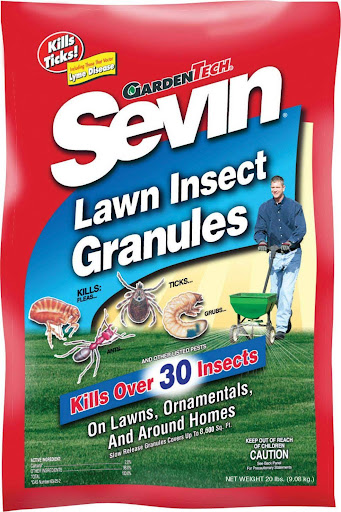
Product Details:
Specifications:
Reviews:
11. Sentry Fiproguard Plus For Dogs, 3 Pack
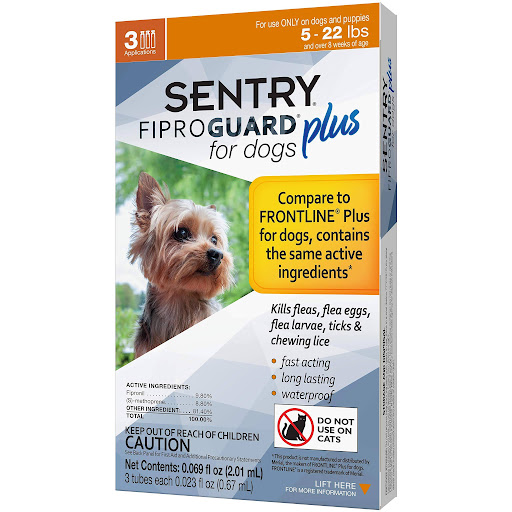
Product Details:
Specifications:
Reviews:
12. Pyranha Zero-Bite Natural Insect Spray 1 Quart
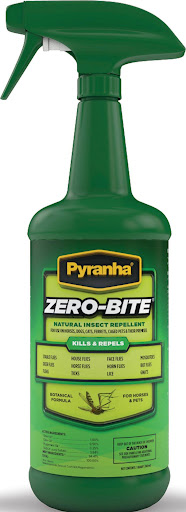
Product Details:
Specifications:
Reviews:
13. Hot Shot Fogger With Odor Neutralizer, 3-Pack, 2-Ounce
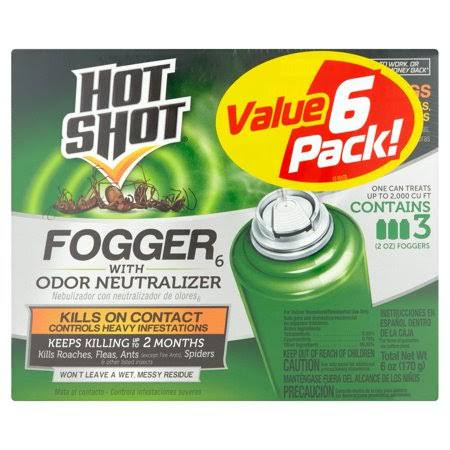
Product Details:
Specifications:
| Assembled Product Weight | 1.68 lbs |
| Assembled Product Dimensions (L x W x H) | 4.37 x 6.44 x 5.25 Inches |
Reviews:
14. Advantage Flea & Tick Treatment Spray For Dogs – 8 Oz
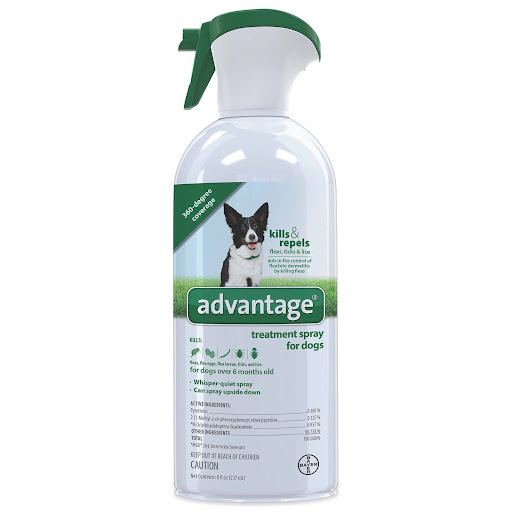
Product Details:
Specifications:
| Weight | 0.5 lb |
Reviews:
15. Victor Ultimate Flea Trap
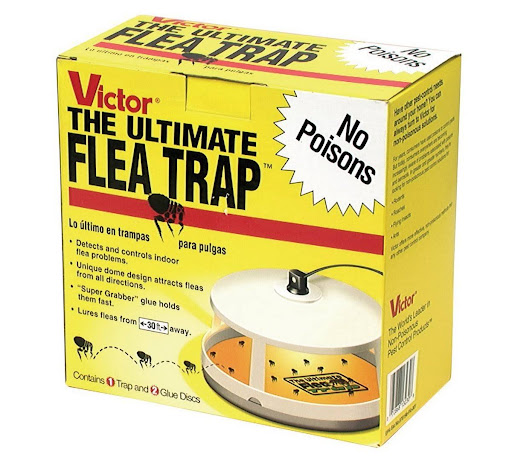
Product Details:
Specifications:
Reviews:
16. Health Extension Little Bites Chicken & Brown Rice Dry Dog Food – 10 Lbs.
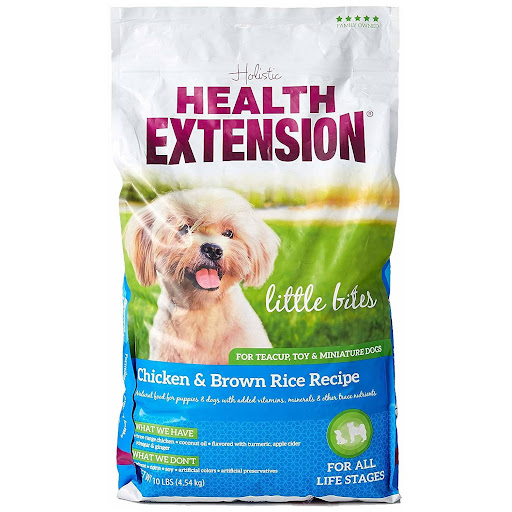
Product Details:
Specifications:
| Weight | 10 lb |
Reviews:
17. Portland Pet Food Company Pumpkin Brew Biscuits Dog Treats
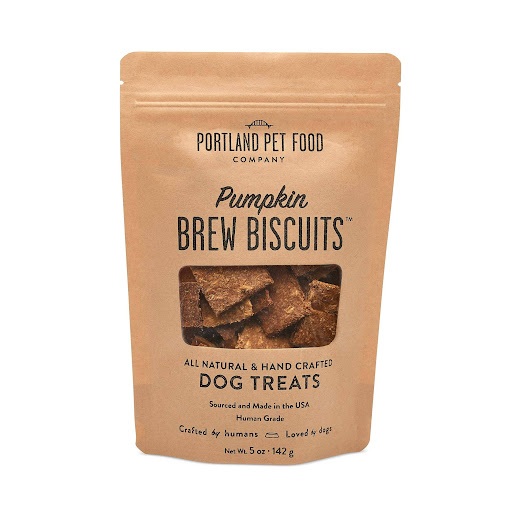
Product Details:
Specifications:
Reviews:
18. Hills Science Diet Small And Toy Breed Adult Dog Food, Lamb Meat And Recipe – 4.5 Lb Bag
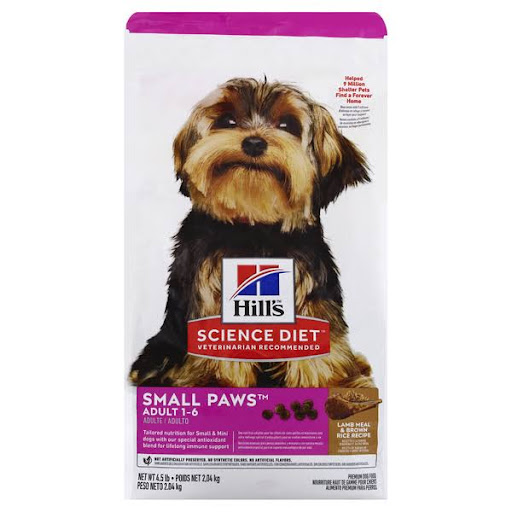
Product Details:
Specifications:
| Units in Package | 1 |
| Unit Size | 4.5 lb |
| Directions | Daily Feeding Guide: 2 lb (0.9 kg) weight of dog: 1/4 cups: 25 grams. 5 lb (2.3 kg) weight of dog: 1/2 cups: 55 grams. 8 lb (3.6 kg) weight of dogs: 3/4 cups: 80 grams. 10 lb (4.5 kg) weight of dogs: 7/8 cups: 90 grams. 15 lb (6.8 kg) weight of dog: 1-1/4 cups: 130 grams. 20 lb (9.1 kg) weight of dog: 1-1/2 cups: 160 grams. 25 lb (11.3 kg) weight of dog: 1-3/4 cups: 185 grams. 30 lb (14 kg): 2 cups: 210 grams. We care about the health of your pet. Visit your veterinarian regularly and ask if nutritional needs have changed. Adjust feeding amounts as needed to maintain optimal body weight. New food? Please transition your pet. Hill's Science Diet is available in a wide variety of dry foods, wet foods and treats for your pet's unique needs. To prevent suffocation, keep this bag out of the reach of pets and children. Store in a cool, dry place. |
| Ingredients | ., Lamb Meal, Brown Rice, Brewers Rice, Whole Grain Sorghum, Whole Grain Wheat, Corn Gluten Meal, Chicken Fat, Cracked Pearled Barley, Chicken Liver Flavor, Dried Beet Pulp, Soybean Oil, Flaxseed, Lactic Acid, Pork Liver Flavor, Potassium Chloride, Iodized Salt, Vitamins (Vitamin E Supplement, L-Ascorbyl-2-Polyphosphate (Source of Vitamin C), Niacin Supplement, Thiamine Mononitrate, Vitamin A Supplement, Calcium Pantothenate, Riboflavin Supplement, Biotin, Vitamin B12 Supplement, Pyridoxine Hydrochloride, Folic Acid, Vitamin D3 Supplement), L-Lysine, Choline Chloride, Calcium Carbonate, Taurine, Minerals (Ferrous Sulfate, Zinc, Oxide, Copper Sulfate, Manganous Oxide, Calcium Iodate, Sodium Selenite), Mixed Tocopherols for Freshness, Natural Flavors, Beta-Carotene. |
Reviews:
19. Natural Balance L.i.d. Limited Ingredient Diets Dog Food, Lamb & Brown Rice Formula, Small Breed Bites – 4 Lb
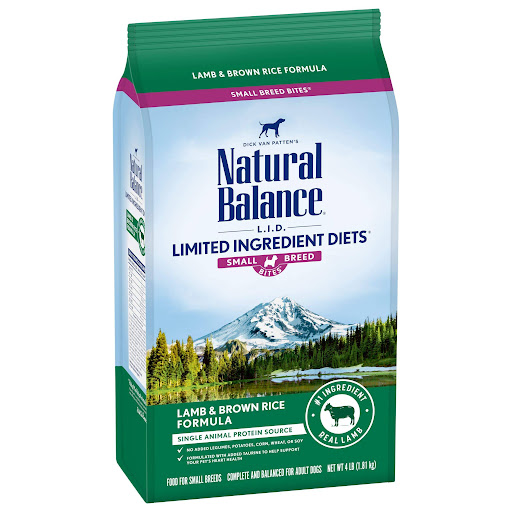
Product Details:
Specifications:
| Units in Package | 1 |
| Unit Size | 4 lb |
| Directions | Daily Feeding Guidelines: Weight of Adult Dog up to 10 lb: 1 Serving Size (cups (Standard 8 oz measuring cup)). Weight of Adult Dogs: 10-20 lbs: 1 – 1-1/2 Serving Size (cups (Standard 8 oz measuring cup)). Weight of Adult Dogs: 20-30: 1-1/2 – 2 Serving Size (cups (Standard 8 oz measuring cup)). Weight of Adult Dogs: 30-40: 2 – 2-1/2 Serving Size (cups (Standard 8 oz measuring cup)). Weight of Adult Dogs: 40-60: 2-1/2 – 3-1/2 Serving Size (cups (Standard 8 oz measuring cup)). Weight of Adult Dogs: 60-80: 3-1/2 – 4-1/4 Serving Size (cups (Standard 8 oz measuring cup)). Weight of Adult Dogs: 80-100: 4-1/4 – 5 Serving Size (cups (Standard 8 oz measuring cup)). The amounts in the table are intended as guidelines only. The food intake should be adjusted according to the age, weight, breed, temperature, climate and activity level of your dog. Consult a veterinarian for specific weight recommendations. Adult dogs should be fed either once or twice per day. When you first start feeding Natural Balance L.I.D. Limited Ingredient Diets Lamb & Brown Rice Small Breed Bites Dry Dog Formula, we suggest starting with the amounts recommended in the table. Energy requirements vary with environmental conditions, temperature and activity of your dog. The amount of food should always be adjusted to suit your dog's needs. Keep clean water available at all times. See your veterinarian regularly. |
| Ingredients | ., Lamb, Brown Rice, Lamb Meal, Brewers Rice, Rice Bran, Brewers Dried Yeast, Sunflower Oil (Preserved with Mixed Tocopherols), Natural Flavor, Potassium Chloride, Salt, Choline Chloride, DL-Methionine, Taurine, Vitamins (Vitamin E Supplement, Niacin Supplement, D-Calcium Pantothenate, Vitamin A Supplement, Riboflavin Supplement, Thiamine Mononitrate, Vitamin D3 Supplement, Pyridoxine Hydrochloride, Folic Acid, Biotin, Vitamin B12 Supplement), Minerals (Zinc Proteinate, Zinc Sulfate, Ferrous Sulfate, Iron Proteinate, Copper Sulfate, Copper Proteinate, Manganese Sulfate, Manganese Proteinate, Sodium Selenite, Calcium Iodate), Rosemary Extract, Green Tea Extract, Spearmint Extract. |
Reviews:
20. Skout's Honor Dog Shampoo Flea & Tick 16oz
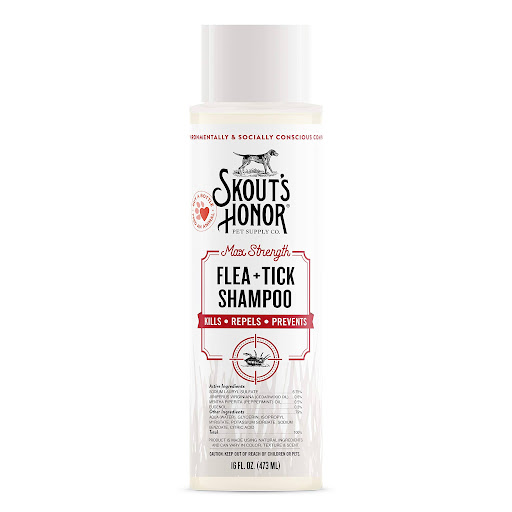
Product Details:
Specifications:
| Weight | 1 lb |

